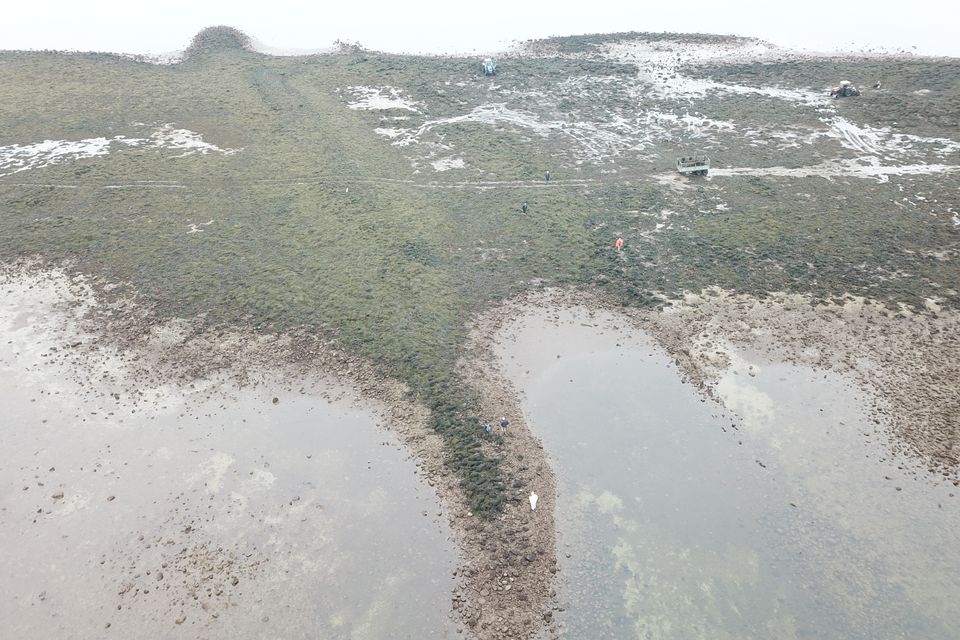
Tide reveals a Bronze Age fort on the Irish island of Clew Bay
A sunken Bronze Age fort has been discovered on the island of Clew Bay off the coast of North Mayo, Ireland.
The discovery was made at low tide in Clew Bay.
Archaeologist Michael Gibbons said initial research suggested that the island – Collanmore – was a fort dating from the Late Bronze Age.
The castle has not been uncovered so far because the site is large and covered with moss.
Gibbons said the double set of fortifications faced large limestone blocks and stretched for 200 to 300 meters and were “most likely late Bronze Age, dating to between 1100-900 BC.”
“In a video taken by Pat Coyne of Letterfrack, you can see us clearing the weeds from the outer rampart and you can see that it is faced with large limestone blocks. This outer rampart was known to locals, but they had no idea how old it was or how important it was.”

“These ramparts will have controlled access to the island from people coming from the mainland.”
Their size and scale “suggest that the island was of great strategic importance at the time”.
“Similar fortifications can be seen at a number of other coastal and loch promontory forts in the west of Ireland.
“The closest examples are found a short distance to the north at Lough Fee, north of Newport, Co Mayo, where there is a large loch promontory fort, also defended by double ramparts, and a massive loch promontory fort on Carra Lake, covering more than 20 acres.
“Late Bronze Age hill forts are the largest monuments built in Ireland and can measure up to 320 acres with miles of defensive ramparts.”
“They were built by societies dominated by warlords and we have very good evidence that they were actively used during periods of warfare between various tribes.”
The Clew Bay discovery has been reported to the National Monuments Service.
You may also like
- A 1700-year-old statue of Pan unearthed during the excavations at Polyeuktos in İstanbul
- The granary was found in the ancient city of Sebaste, founded by the first Roman emperor Augustus
- Donalar Kale Kapı Rock Tomb or Donalar Rock Tomb
- Theater emerges as works continue in ancient city of Perinthos
- Urartian King Argishti’s bronze shield revealed the name of an unknown country
- The religious center of Lycia, the ancient city of Letoon
- Who were the Luwians?
- A new study brings a fresh perspective on the Anatolian origin of the Indo-European languages
- Perhaps the oldest thermal treatment center in the world, which has been in continuous use for 2000 years -Basilica Therma Roman Bath or King’s Daughter-
- The largest synagogue of the ancient world, located in the ancient city of Sardis, is being restored











Leave a Reply